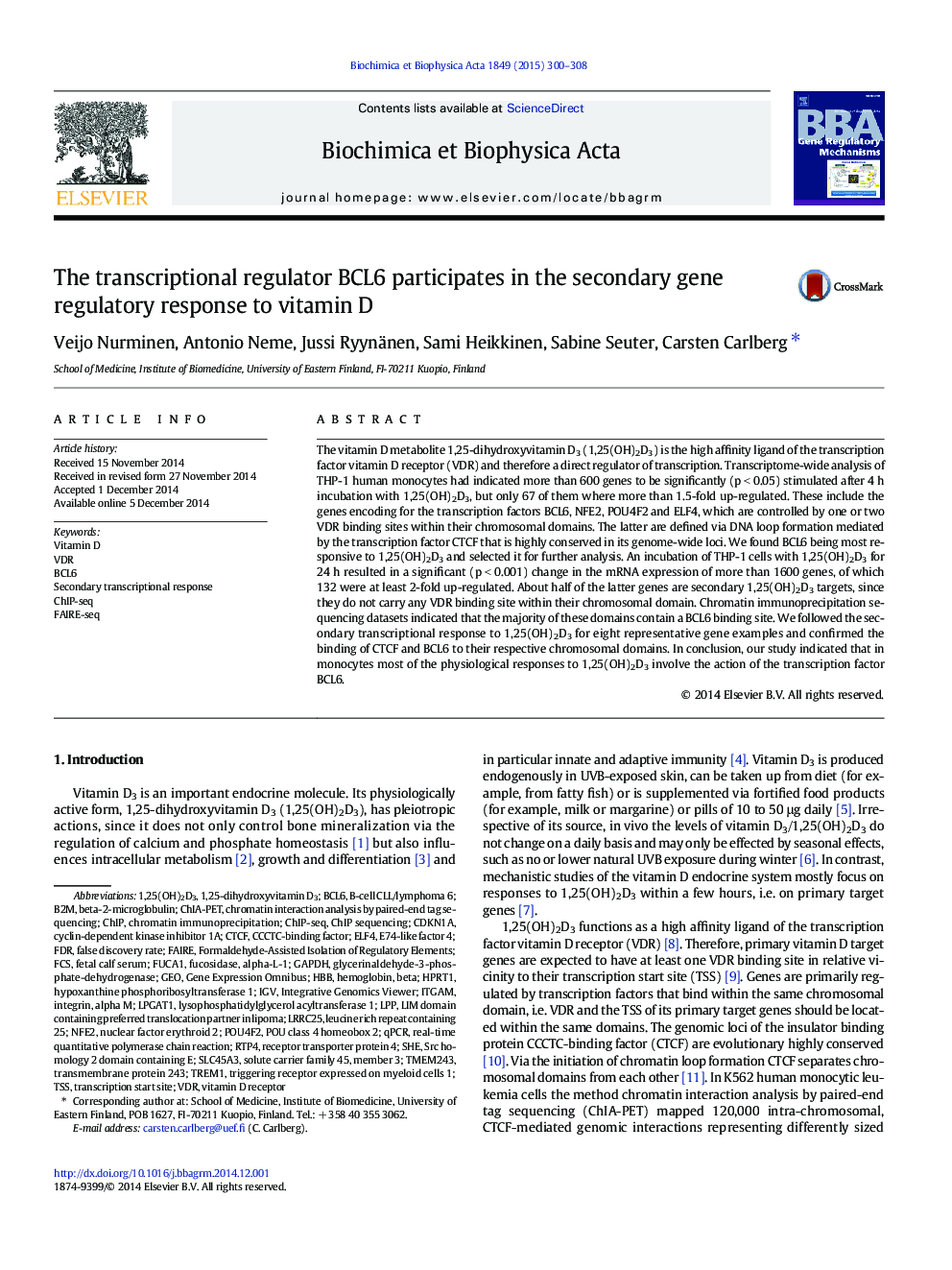| Article ID | Journal | Published Year | Pages | File Type |
|---|---|---|---|---|
| 10799038 | Biochimica et Biophysica Acta (BBA) - Gene Regulatory Mechanisms | 2015 | 9 Pages |
Abstract
The vitamin D metabolite 1,25-dihydroxyvitamin D3 (1,25(OH)2D3) is the high affinity ligand of the transcription factor vitamin D receptor (VDR) and therefore a direct regulator of transcription. Transcriptome-wide analysis of THP-1 human monocytes had indicated more than 600 genes to be significantly (p < 0.05) stimulated after 4 h incubation with 1,25(OH)2D3, but only 67 of them where more than 1.5-fold up-regulated. These include the genes encoding for the transcription factors BCL6, NFE2, POU4F2 and ELF4, which are controlled by one or two VDR binding sites within their chromosomal domains. The latter are defined via DNA loop formation mediated by the transcription factor CTCF that is highly conserved in its genome-wide loci. We found BCL6 being most responsive to 1,25(OH)2D3 and selected it for further analysis. An incubation of THP-1 cells with 1,25(OH)2D3 for 24 h resulted in a significant (p < 0.001) change in the mRNA expression of more than 1600 genes, of which 132 were at least 2-fold up-regulated. About half of the latter genes are secondary 1,25(OH)2D3 targets, since they do not carry any VDR binding site within their chromosomal domain. Chromatin immunoprecipitation sequencing datasets indicated that the majority of these domains contain a BCL6 binding site. We followed the secondary transcriptional response to 1,25(OH)2D3 for eight representative gene examples and confirmed the binding of CTCF and BCL6 to their respective chromosomal domains. In conclusion, our study indicated that in monocytes most of the physiological responses to 1,25(OH)2D3 involve the action of the transcription factor BCL6.
Keywords
BCL6chromatin interaction analysis by paired-end tag sequencingB-Cell CLL/lymphoma 6ChIA-PETELF4nuclear factor erythroid 2HBBCDKN1AHPRT1ITGAMCTCFb2mqPCRGEOFDRChIP-SeqGAPDHLPPIGVFCS1,25(OH)2D31,25-dihydroxyvitamin D3SHEFAIREchromatin immunoprecipitationBeta-2-microglobulinChIP sequencingformaldehyde-assisted isolation of regulatory elementsfetal calf serumCCCTC-binding factorIntegrative Genomics Viewercyclin-dependent kinase inhibitor 1Afalse discovery rateHypoxanthine phosphoribosyltransferase 1real-time quantitative polymerase chain reactionCHiPGene Expression Omnibus
Related Topics
Life Sciences
Biochemistry, Genetics and Molecular Biology
Biochemistry
Authors
Veijo Nurminen, Antonio Neme, Jussi Ryynänen, Sami Heikkinen, Sabine Seuter, Carsten Carlberg,
